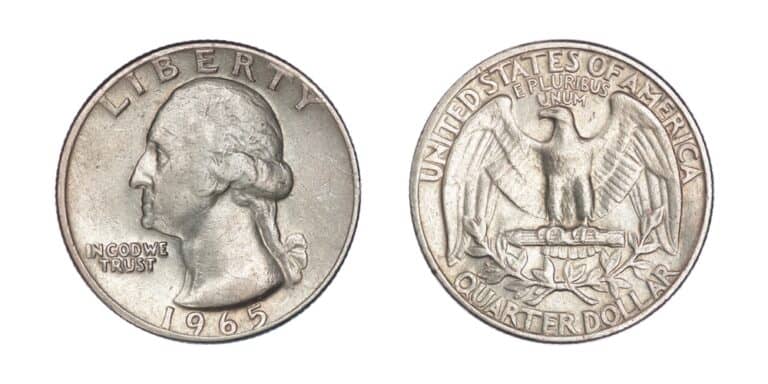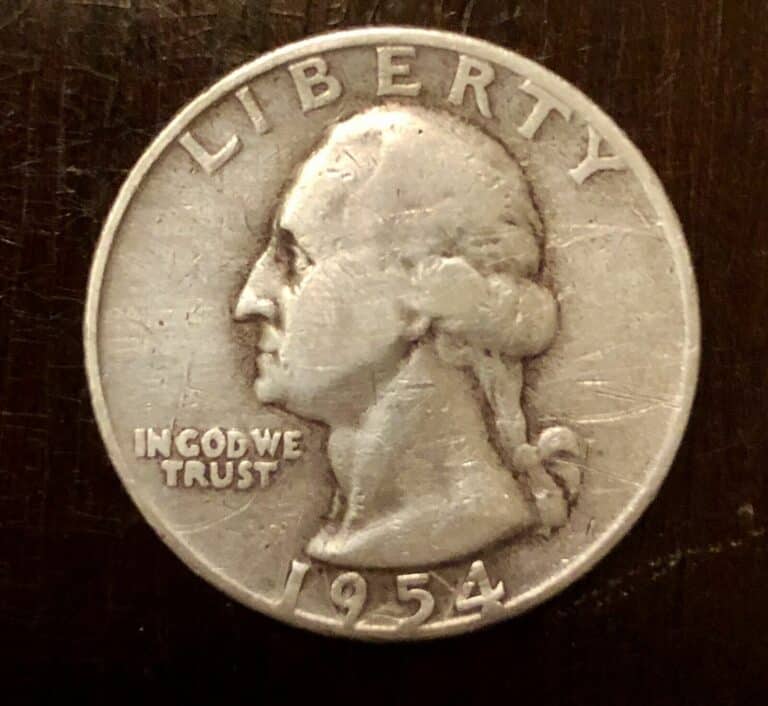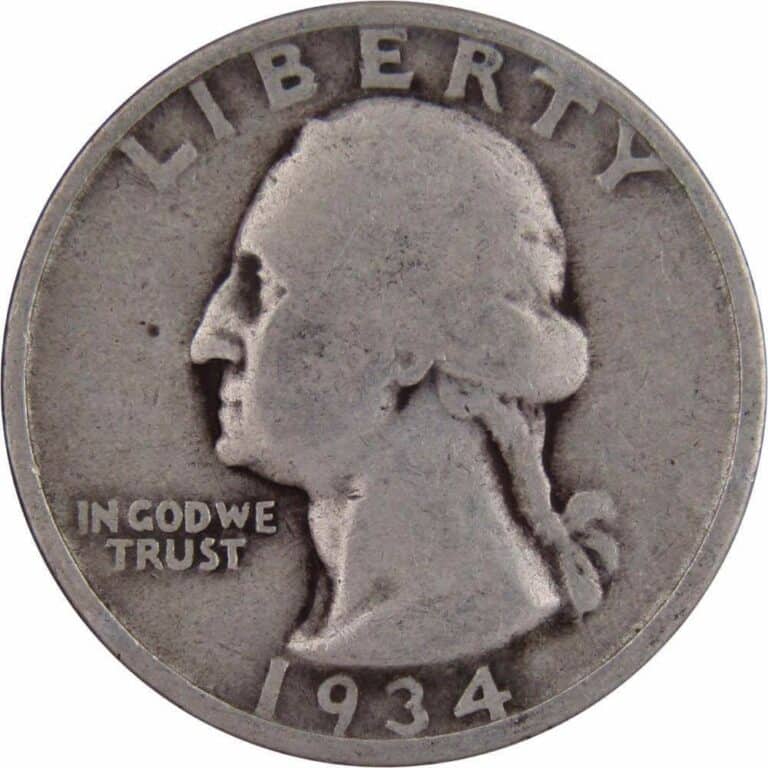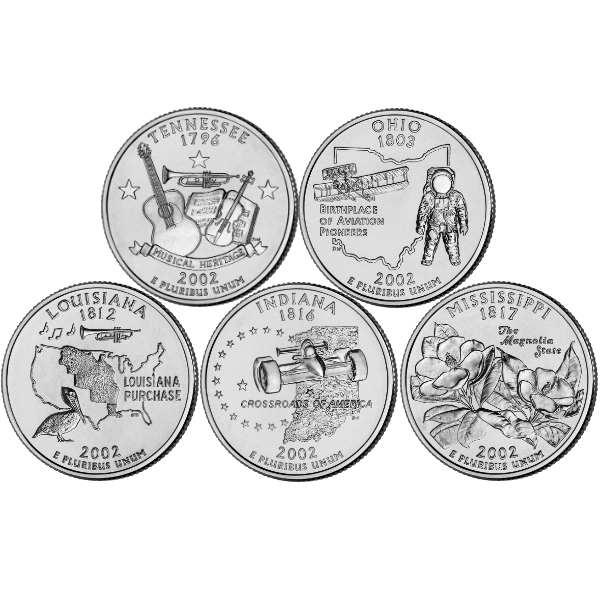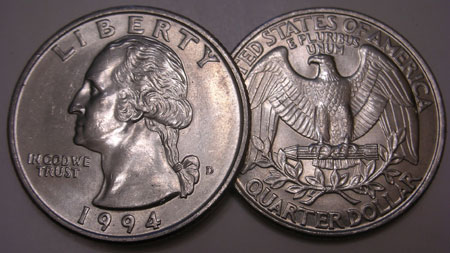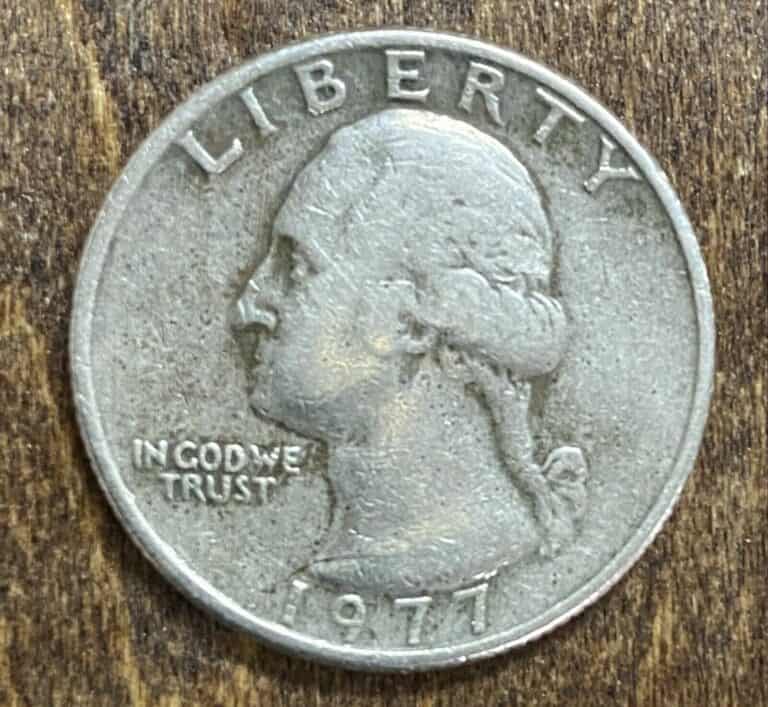1960 Quarter Value: How Much Is It Worth Today?
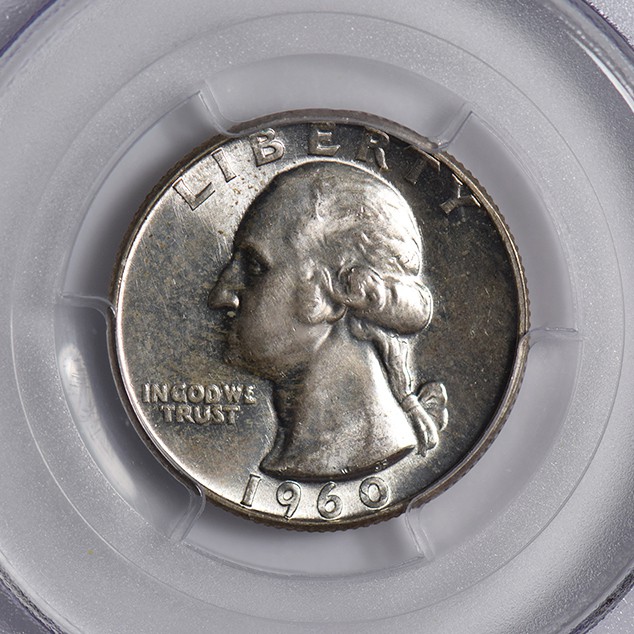
Washington quarters, in circulation since 1932 and almost until the turn of the century, are the favorite coins of many numismatists. Not all Washington quarters are created equal, however, as there are certain variations in the coin’s design, composition, quality, mintage, and more over the years.
For example, today we’ll look into the 1960 quarter value, the different types and variations of that year’s coin, their details, manufacturing errors, and more.
1960 Quarter Value Chart |
||||
| Mint mark | Good | Fine | Extremely Fine | Uncirculated |
| 1960 “D” Quarter Value | $4.54 to $5 | $5.50 to $10 | $11 to $27.50 | $30 to $4,000 and above |
| 1960 No Mint Mark Quarter Value | $4.54 to $5 | $5.50 to $10 | $11 to $27.50 | $30 to $6,500 and above |
| 1960 No Mint Mark Proof Quarter Value | n/a | n/a | $6.02 to $10.80 | $25 to $325 and above |
Despite having a face value of just $0.25, a 1960 quarter is pretty much guaranteed to always cost at least 4 to 5 dollars regardless of its quality. That’s because the US Mint was still making silver quarters in 1960 before it eventually switched to nickel-clad copper in 1964. This makes 1960 quarters one of the last mintages of silver $0.25 coins and pretty much turns all of them into collector’s items today.
As you can see from the chart above, however, certain 1960 quarters can have a value well above $4. Depending on the coin’s quality, it can be valued at up to several dozen, several hundred, or even several thousand dollars. Said coin quality is typically measured based on the fidelity and preservation of the details of the coin’s design.
The most common grading system you’ll find for coins is the Sheldon coin grading scale which goes from 1 to 70. In it, the highest grades are pretty much only applicable to coins that have never seen circulation and have been kept in their original uncirculated mint state right off the minting presses. You’ll also see some letters next to the grades such as PR for proof coins, MS for mint state, and so on.
Of course, just the coin’s visual quality isn’t the only contributing factor to its value. As the chart above shows, there are also variations in the prices based on the different types of the 1960 quarter, so, let’s go into those next.
1960 “D” Quarter Value

The first and most common type of 1960 quarter is the one bearing the “D” mint mark of the Denver Mint. There were 63,000,324 such coins minted in 1960, about two times more than the two other types of 1960 quarters combined but not all that high of a number overall, compared to some other years’ mintage numbers.
So, if the mintage is neither too high nor too low, is there anything particularly different or special about the 1960 “D” quarter, such as its design or composition?
Not particularly – the 1960 “D” quarter had the same 90% silver + 10% copper composition as all other quarters made before it. It also had the same 24.3 mm diameter, 1.75 mm thickness, 6.25 grams weight, and a reeded edge. The designs of both the obverse and the reverse were also the same old designs made by John Flanagan for the first 1932 Washington Quarter.
The obverse features the ex-president’s portrait facing to the left with the word “Liberty” written right above him and the motto “In God we trust” minted to the left and just under his chin. The year of minting, i.e. 1960 here, is minted below, at the bottom of the coin. Overall, the Obverse’s design is simple, clean, and stylish, although there is the common criticism that it gathers wear and tear too easily.
The reverse is much busier and more complicated. It includes a large eagle perched on a bunch of arrows with its wings spread out wide. Above the eagle’s head is the motto “E Pluribus Unum”, meaning “From many, one” and above that is written “United States of America”.
Right below the arrows are two olive branches and further down below those is written the coin’s denomination of “Quarter Dollar”. Lastly, between that text and the olive branches above it is placed a tiny little “D” mint mark, signifying that these coins were made by the Denver Mint.
So, if virtually everything about the 1960 “D” quarter was so ordinary, what’s so special about it, other than the 90% silver of its composition? Well, one unique thing about this coin is the fact that there are very few coins with quality grades of MS 66 and above. This can be seen as “bad” for the series as a whole but it does mean that those rare few coins are quite valuable.
The reason for this rarity isn’t in the Denver Mint’s quality of minting but in a flaw with the mint bags and the coins’ trading that year. Explained simply, mint bags are the bags newly minted coins are tossed in before they are transported to whichever bank or storage they were meant for.
When the coins are transported that way, however, there is always a risk of some wear and tear, resulting from the coins banging on each other – that particular type of wear and tear is called “bag marks”. It’s called that way even though it’s identical to other wear and tear on coins because that’s pretty much the only type of wear and tear uncirculated coins can have.
In the case of the 1960 “D” quarter, these bag marks were more numerous than usual because there was excessive trading going on that year and the coins were moved around way more than usual. So, there are fewer 1960 “D” quarters in top-notch condition but those few of them are quite valuable today – sometimes up to $4,000 and above.
1960 No Mint Mark Quarter Value
The second type of 1960 quarter that was made for wide circulation is the 1960 quarter with no mint mark. This coin was minted by the Philadelphia Mint which, traditionally, didn’t put mint marks on any of its coins until the 1980s – since then, most coins made in Philadelphia bear a “P” mint mark on the same place as the Denver Mint’s “D”.
In other words, the lack of a mint mark on some 1960 quarters isn’t some rare and valuable manufacturing error or peculiarity – it’s basically the “mint mark” of the Philadelphia Mint. There were 29,164,000 of these coins made in 1960.
Aside from this little historical note, is there anything about the 1960 no mint mark quarter that makes it noteworthy and/or more valuable than its Denver-made counterpart?
Design-wise, the Philly-made 1960 quarters are identical to those minted in Denver – same composition, same parameters, same design. There are fewer no-mint-mark coins with bag marks from 1960, meaning that there are a few more high-quality coins made in Philly that have been preserved from that year, at least compared to the overall mintage.
Additionally, there seem to be a few more manufacturing errors bumping up the coin’s value with the 1960 Philadelphia mintage than there is with the Denver mintage. While “more errors” sounds like a bad thing, in the world of numismatics there are many small and rare manufacturing errors that are actually quite valuable.
These can and do happen in every mint and with every mintage, there’s just a bit of variation in terms of where they happen more in what year. This does explain the comparatively higher average value of high-quality no-mint-mark 1960 quarters over 1960 “D” quarters.
1960 No Mint Mark Proof Quarter Value
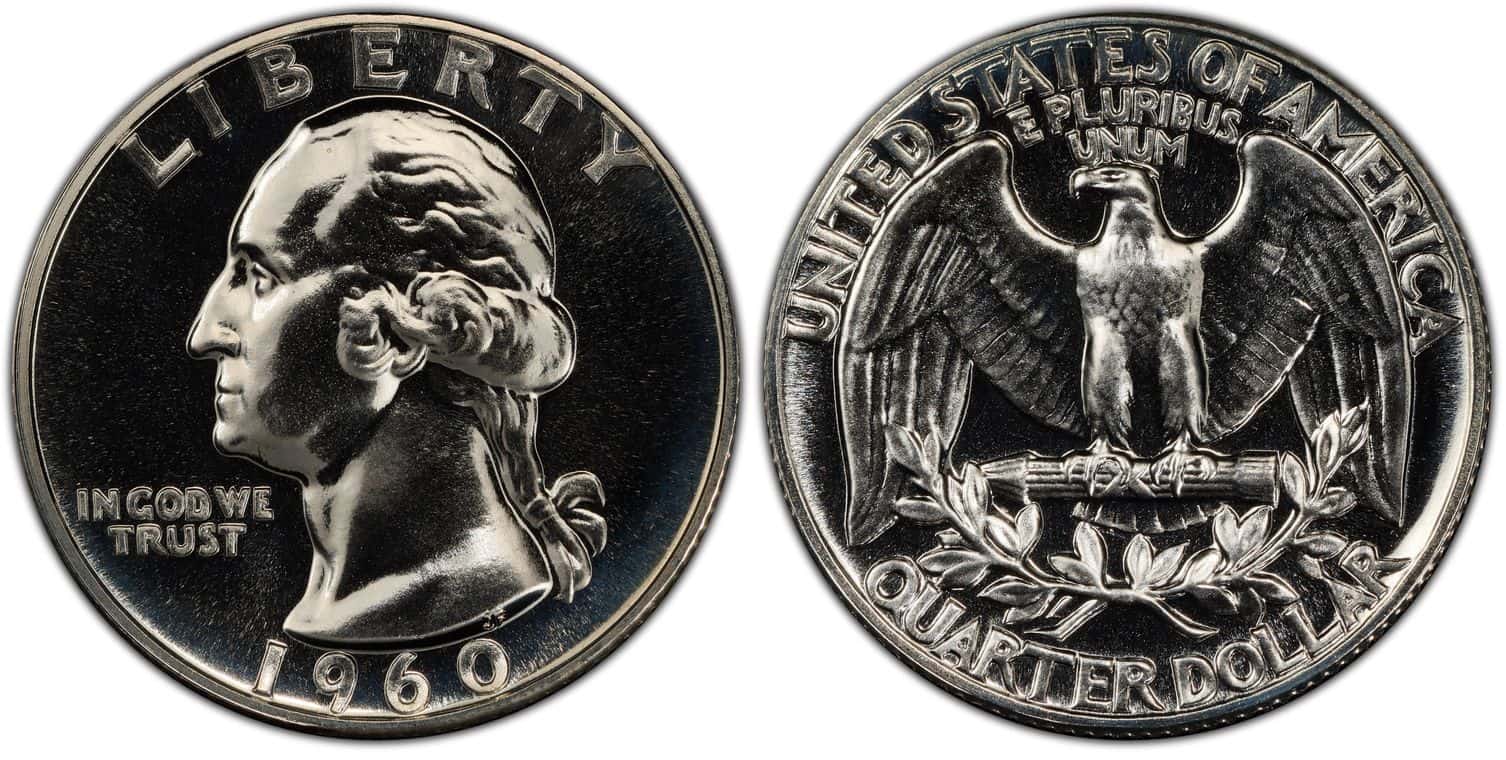
The last type of 1960 quarter we need to examine is the proof quarter that was also produced by the Philadelphia Mint that year. There were 1,691,602 proofs made that year and, as with any Philly-made coin from that period, they too didn’t have any mint marks.
As proof coins, however, they are easily distinguished from other regular strike coins. That’s because proof coins are made with entirely different minting dies that gets dipped in acid, are then hand-polished, and are used to strike each coin twice as much and more precisely.
This whole process is, naturally, more expensive as proof coins are used for display purposes and to sell to collectors at higher prices – they are not meant for wide circulation. That’s also why there are much fewer of them made and why they need to have much better detail and quality.
All this explains why all 1960 proof coins are of “Extremely Fine” quality or better, however, it doesn’t explain why their average value is lower than that of similar-quality regular strike quarters.
Well, it actually does. The reason behind this apparent discrepancy is that, while there are way more regular strike coins than there are proofs, there are significantly fewer uncirculated regular strike coins than there are uncirculated proofs. So, while proof quarters are relatively rare overall, high-quality regular strikes are significantly fewer than the 1,691,602 proofs – hence why they are more valuable to collectors.
All this makes 1960 proof quarters good collector’s items for beginner numismatics that want to add something interesting and affordable to their collections. Yet, a 1960 proof quarter isn’t something that will make you rich as its top value is unlikely to ever go beyond a few hundred dollars.
1960 Quarter Grading
Numismatists grade 1960 quarters the same way they grade every other coin – first, they check the coin’s authenticity, mintage, and quality, and only then do they look for certain rare peculiarities such as manufacturing errors or anything similar. Here’s a good video explainer on how grading 1960 quarters works.
Lists of 1960 Quarter Errors
Manufacturing errors in coins can either ruin a coin or they can drastically ramp up its value and collectability. The difference between the two depends on the error as some errors make the coins unappealing and even unusable in wide circulations while others are seen as neat, interesting, and even visually appealing.
We’ll list and explain a couple of errors below:
1960 Quarter Double Die Error
A double die error is what happens when the coin’s metal planchet has shifted a tiny bit in its place right between the two strikes of the minting die. Such shifts are almost always very small – parts of a millimeter – and the result is just a slight blurring or a distortion in the coin’s design. Again, this is most easy to notice in the letters and numbers on coins.
1960 Quarter Die Break Error
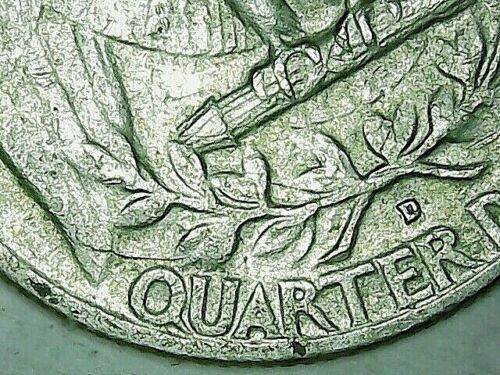
Die break errors are exactly what they sound like – this is what happens when the minting die has started to crack a little bit from too much use. Of course, when that happens, the minting die gets replaced, but just before the problem gets noticed, there are always at least a few coins that get minted by the slight break soon-to-be-replaced die.
Such coins are recognizable by the tiny broken marks on them which are usually most easily visible on the letters or numbers on the coins. This error is almost never significant enough to be ugly and unappealing before the minting die gets replaced before that. Instead, this error is usually subtle and is therefore quite interesting and valuable.
1960 Quarter FAQ
Which 1960 quarters are worth money?
All 1960 quarters are worth their melting value at the very least. Those coins of exceptionally high visual quality, however, can be worth dozens or hundreds of dollars – or even thousands if they also have some interesting manufacturing errors on them
Is a 1960 quarter all silver?
A 1960 dollar is not all silver, however, it is 90% silver. The other 10% is copper which is added not to lower the coin’s melting value but to make the metal alloy more durable and suitable for minting. From 1965 onwards, all quarters started getting minted with no silver as it had become too expensive for a $0.25 coin.

